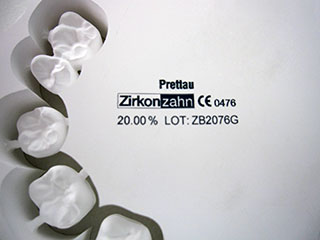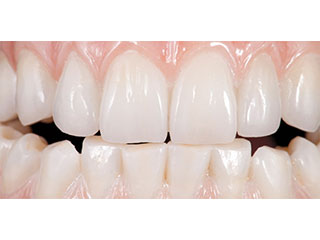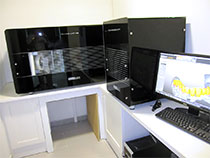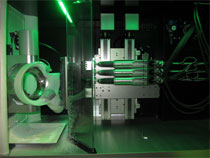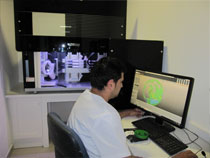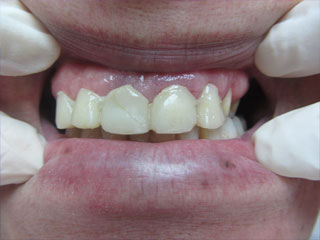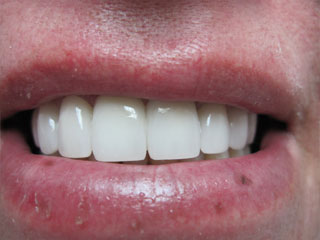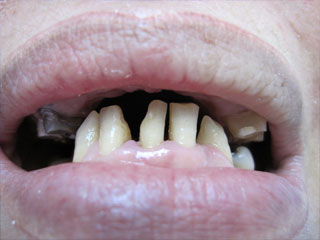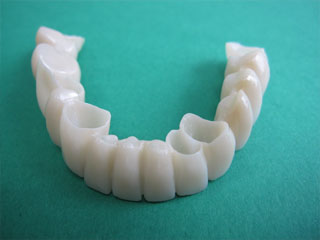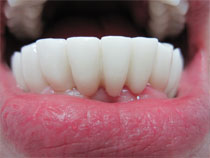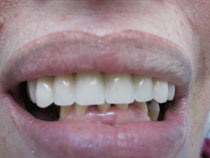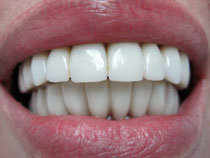
Odontología Estética
La estética dental nos permite satisfacer la creciente preocupación que existe en la sociedad actual por una sonrisa sana y bella.
Instituto Dental se ha convertido en un centro de referencia para tratamientos de estética dental, al personalizar a cada uno de nuestros pacientes seleccionamos las técnicas que nos permiten optimizar los resultados.
En la estética incluimos las coronas de porcelana sin metal (zirconio, empress…), las carillas de cerámica, el blanqueamiento dental, las reconstrucciones o frentes estéticos, y la ortodoncia.
1. Las carillas y fundas de porcelana sin metal.
¿Qué son las carillas de porcelana?
Las carillas de porcelana son unas láminas finas que cubren toda la cara frontal del diente, adhiriéndose a ellas mediante un adhesivo especial.
Las carillas, se emplean para reconstruir una sonrisa dañada por alguna alteración en el color o en la forma de los dientes.
Mediante una carilla de porcelana es posible cambiar la forma, el color, e incluso la posición del diente.
Es un tratamiento poco invasivo porque requiere una mínima preparación del diente.
.jpg)
Indicaciones
La colocación de carillas de porcelana está indicada en los siguientes casos:
- Problemas de color de los dientes:
Tinciones medicamentosas (como podrían ser tetraciclina o fluorosis). - Problemas de forma de los dientes:
Dientes más pequeños y afilados de lo normal, dientes muy cortos, dientes fracturados o simplemente separados.
Contraindicaciones
Existen casos en los que es imposible reconstruir una sonrisa con carillas:
- Casos en que la salud y la higiene del paciente sea insuficiente.
- Casos de bruxismo
- Casos de apiñamientos importantes
- Casos en que no existe suficiente esmalte para adherir la carilla al diente
2. Las fundas de porcelana
Las coronas o fundas de porcelana son un recubrimiento total del diente que simula toda la anatomía coronaria.
Se utilizan cuando el diente está muy deteriorado y no puede ser reparado con un empaste.
Los materiales utilizados pueden ser una combinación de metal, porcelana, sólo de porcelana, o zirconio dependiendo del requerimiento estético.
3. ¿Qué es la tecnología CAD-CAM?
Es lo último en tecnología dental, consiste fundamentalmente en un equipo controlado por un ordenador que diseña en 3D la funda siguiendo los parámetros marcados por los dientes adyacentes y homólogos.
Después procede a darle forma y acabado según el diseño.
Así se anula el posible error humano en el trabajo final y se ahorra en tiempos de espera.
CAD/CAM
Es la abreviatura inglesa para las expresiones:
CAD: diseño asistido por ordenador (computer-aided design) y
CAM: fabricación asistida por ordenador (computer- aid manufacturing)
Instituto Dental cuenta en sus instalaciones, con un equipo CAD-CAM de última generación.
Las coronas de zirconio con tecnología CAD-CAM
Es lo más novedoso en estética dental debido a que ofrece una apariencia muy similar a la de los dientes naturales.
El zirconio es el material más avanzado utilizado en prótesis fija sin metal, poseedor de una dureza y resistencia extraordinaria.
Ventajas del zirconio
- Biocompatibilidad
- Estética
- Elimina el problema de zonas oscuras en el cuello de los dientes
- Resistencia: debido a su gran dureza se pueden utilizar en molares
- Translucidez muy similar al diente natural
- Ajuste óptimo
En resumen, el zirconio permite que las prótesis dentales puedan realizarse sin usar metales, premiando así una mayor estética, translucidez y evitando el riesgo de alergias en personas predispuestas debido a sus propiedades biocompatibles.
